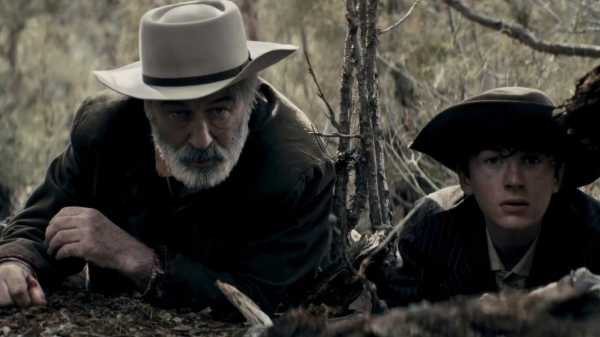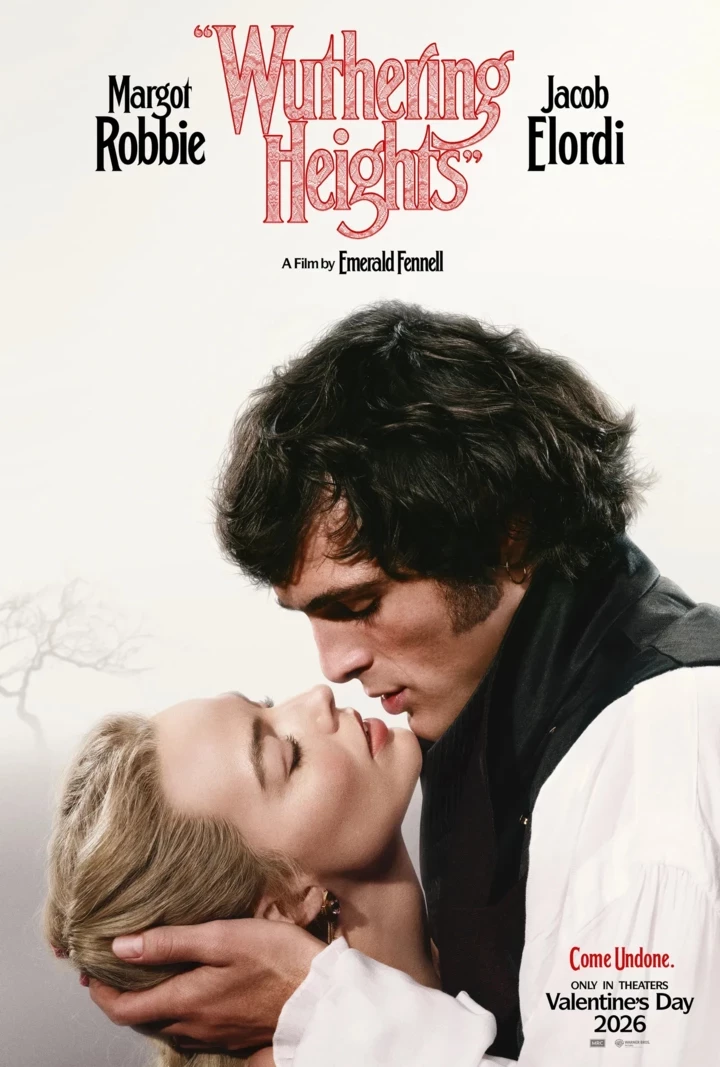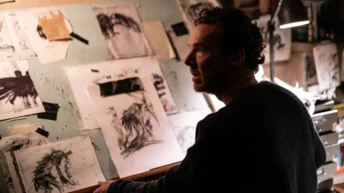
Save this storySave this storySave this storySave this story
Some movies eventually become inseparable from the stories of their production. Alfred Hitchcock’s “The Birds” and “Marnie” are now inextricably associated with their star Tippi Hedren’s allegations of the director’s abusive behavior. Other films are tied to their backstories even before their release, whether Michael Cimino’s extended schedule and inflated budget on “Heaven’s Gate” or Francis Ford Coppola’s bold self-financing of “Megalopolis.” Joel Souza’s film “Rust,” a Western, is in the latter category, for an immeasurably more serious reason: during its filming, in 2021, in New Mexico, its star and co-producer, Alec Baldwin, was handed a gun that, unbeknownst to him, contained live ammunition. When he rehearsed a shoot-out scene with the gun, he accidentally shot the cinematographer, Halyna Hutchins, killing her. The bullet passed through her and struck Souza, wounding him. Baldwin and the movie’s armorer, Hannah Gutierrez-Reed, were charged with involuntary manslaughter. Charges against Baldwin were eventually dismissed, on procedural grounds. Gutierrez-Reed was found guilty and sentenced to eighteen months’ imprisonment. The first assistant director, David Halls, pleaded guilty to a misdemeanor charge of negligent use of a deadly weapon.
I’d read accounts of this horrific incident at the time—along with related reports of unsafe practices on the set, arising in part from its low budget—and assumed that the movie would never be completed. But in 2023 filming resumed, in Montana, with a new cinematographer, Bianca Cline. In the meantime, Souza had refashioned the story to eliminate the scene—set in a church—in which the shooting occurred. Some actors were no longer available; their roles were recast and their scenes redone; in one case, an actor’s face was digitally painted into previously filmed takes. Souza claimed to be finishing the film at the behest of Hutchins’s family, and said that his goal was “just honoring her final work” as a tribute to Hutchins and a showcase for her artistry, as well as for the financial benefit of her family. (As part of a settlement, Hutchins’s widower, Matthew, was named an executive producer of the film.) The movie has now been completed and released, both theatrically and streaming. It is—at least for me—impossible to watch it without its grim production history in mind. On the other hand, I don’t believe that this knowledge influences my sense of its artistry, except to the extent that its complicated genesis seems implicated in the results.
“Rust”—based on a script by Souza, who co-wrote the story with Baldwin—is set in 1882. Its action begins in Wyoming, where the two orphaned Hollister brothers, Lucas (Patrick Scott McDermott) and Jacob (Easton Malcolm), live together in their late parents’ farmhouse. Lucas, who’s thirteen, is raising Jacob, who’s about half as old, but with difficulty. They travel to a nearby town where Lucas sells livestock to pay for provisions. In a general store, Lucas fights and injures a boy who bullies Jacob. The next day, the boy’s father, named Charles Gantry (Gabriel Clark), shows up to demand that Lucas take the boy’s place on his ranch; the following day, Lucas shoots at a wolf and accidentally kills Gantry, whom he didn’t see approaching. Lucas is arrested, convicted of murder, and sentenced to hang. But he’s broken out of jail by an outlaw named Harland Rust (Baldwin), who happens to be his estranged grandfather. Rust plans to sneak the boy into Mexico, where a trusted friend and a place in school are waiting, and their rugged fugitive journey is as much a drama of mentorship and maturation as a sentimental tale of family bonds. But bounty hunters get wind of the breakout—Rust has long been a wanted man—and give chase. Much violence ensues, both between the pursuers and the pursued and among the trackers themselves, who are competing for the payoff.
Despite, or perhaps because of, the story’s stark melodramatic clarity—the rooting interest of saving a child from injustice, the outlaw with a heart of gold risking his life to undertake that responsibility—“Rust” is a painful slog and a nearly inert experience. The storytelling is sluggish, not because the movie’s physical pace is slow but because its mental pace is methodical and academic. The characters are constructed so literally, with traits that either directly motivate the action or else are merely ornamental, that the actors may as well be wearing Post-its. The movie’s exposition is dispensed with numbing obviousness, and, although Souza exerts himself to make backstory emerge amid action, here, too, the performers seem to be waving pallets marked “Backstory alert.”
Souza lacks the art of in medias res and conveys his story as if merely illustrating a synopsis. As a result, he does little more than lay out dramatically significant information, allowing his characters no time or space to reveal anything resembling an inner life. There are a handful of digressions in the category of local color, such as a francophone farmer who cooks haute cuisine and a bounty hunter nicknamed Preacher, who adorns his violent assaults with Bible verses. There’s a sidebar in which a Black sex worker finds herself in bed with a man who formerly earned a living capturing and killing runaway slaves, but the episode is treated vulgarly, as a throwaway, truncated and unresolved and isolated from the rest of the movie. The most distinctive and memorable aspect of “Rust” is indeed the cinematography, whether Hutchins’s or Cline’s. It excels most in its use of low-light effects: scenes filmed deep in shadows or illuminated by candlelight evoke the material realities and haunted moods of a realm without electricity or urban infrastructure.
Reports on the movie have emphasized the irony of a tragic mishap involving firearms occurring in the production of a movie that Souza himself has called “anti-gun.” And “Rust” superficially is so; without a gun, Lucas wouldn’t have shot anyone, and, midway through the movie, he gazes ruefully at the family-heirloom rifle and declares, “It’s ruined the life of almost everyone it’s ever come across: them Apaches’, mine, Charles Gantry’s, my father’s. . . . He killed himself with this rifle a year after my mother passed.” But this idea, too, is merely placed on the movie like an anachronistic bumper sticker. The serious implication of it in the context of a Western, regarding the frontier as a place where state power is unformed, loose, and dubious, remains anecdotal and undeveloped.
That is not the only aspect of “Rust” that feels underinhabited and underrealized. It’s as if the movie’s fabric had been stretched to the breaking point to cover its large narrative span (it runs two hours and nineteen minutes). The thinness of realization may be of a piece with the movie’s dramatic limitations—and both reflect not only a relatively low budget (estimated by Souza at seven and a half million dollars) but also the complications of a two-part production, the technical difficulty of visually reconciling and matching the New Mexico and Montana locations, even within individual scenes. It’s hard to imagine spontaneity and freedom and a wide purview arising amid such practical complications.
What’s even harder to imagine is Souza thinking that the finished film, and the methods by which he finished it, could reflect his stated intention of paying homage to Hutchins and spotlighting her artistry. However sincere and dedicated Bianca Cline’s efforts are, there’s something grotesque about hiring a second cinematographer to attempt to reproduce Hutchins’s style, and something perverse about digitally pasting an actor’s face on another’s in order to maintain continuity. Maintaining the fiction of continuity after the incommensurable discontinuity of Hutchins’s death is, at best, a highly questionable choice.
The plot of “Rust” may have been old-fashioned from the start, but Souza’s approach to the completion of the film is forthrightly reactionary. The main question of contemporary cinema isn’t (pace the nominal avant-garde) whether to tell a story but what story to tell, how to tell it, and, for that matter, what a story is. The modern cinema isn’t a repudiation of stories but a point of view on them—neither a rejection of them nor an assumption of them but an effort to discover them. After the on-set tragedy, Souza honorably turned his attention to Hutchins’s artistry, but he maintained the peculiar belief that the original story of “Rust” was the right device to do so.
There’s little about “Rust,” despite the unique horror of its production, to distinguish it, in form or style, from other fiction features. After the death of Hutchins, “Rust” should never have resumed filming. Souza said that the movie was about halfway completed in New Mexico. That material would—and should—have made for an ample movie. It was incumbent on the director to present his damaged film to the world in a way that reflected its broken essence: an assemblage of unedited takes from the New Mexico stage of production, leaving the slate in frame (it’s standard for the slate to bear the names of the director and the cinematographer). To leave “Rust” in a fragmentary form, keeping onscreen only the actors who collaborated with Hutchins, showing exactly what she worked on and not what someone else was hired to imitate, would have been both an honorable tribute to her creative inspiration and a far more interesting film. Its very incompleteness would have called attention to Hutchins’s life and work and to her death—to the story of “Rust” that she devoted herself to and to how it all unnaturally ended. ♦
Sourse: newyorker.com







